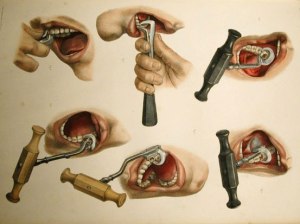 Essential reading…March is a moving and important achievement…the story of a true American superhero.” –USA Today
Essential reading…March is a moving and important achievement…the story of a true American superhero.” –USA Today
Book Summary:
March is the true story of Congressman John Lewis. It begins on the Edmund Pettus Bridge at the height of the Civil Rights Movement. The story begins with two young boys, Jacob and Esau, meeting Senator Lewis before the inauguration of President Obama. Their mother wanted to show them how far their people had come. Senator Lewis then begins to tell the boys his story. He tells them about how he grew up on a farm and was in charge of the family chickens. He also told them how he wanted to be a preacher and how he become emotionally attached to the chickens. In 1951, his Uncle Otis took him on a road trip to Ohio where he got to see things he had never seen. John loved school and went even when his dad told him that he couldn’t because he needed to help on the farm. Then in 1954, Brown Vs. The Board of Education came down and desegregated schools. John thought things would be different now, but they were not. There were still many injustices happening. He then heard Dr. Martin Luther King, Jr. speak on the radio and from that moment on his life was different. He preached his first public sermon five days before his seventeenth birthday. He went to college, but wanted to attend Troy State. He then met with a lawyer and Dr. Martin Luther King, Jr.. He then began his life’s work of nonviolent protests. He participated in sit-ins and was even arrested. The rest of his story is continued in books two and three.
APA Reference:
Lewis, J., Aydin, A., & Powell, N. (2013). March: Book One. Marietta, GA: Top Shelf Productions.
Impressions:
This book is very well done. The illustrations are well done and really add to the story. It gives the story a little reprieve to make it less heavy. The fact that they are black and white adds an element to think about while reading. It does a great job at making an autobiography and historical events more understandable for a younger audience. It allows readers to learn about the injustices that occurred in America without feeling overwhelmed or confused. This is a book series that every library should own and encourage students to read.
Professional Review:
Booklist starred (June 1, 2013 (Vol. 109, No. 19))
Congressman Lewis, with Michael D’Orso’s assistance, told his story most impressively in Walking with the Wind (1998). Fortunately, it’s such a good story—a sharecropper’s son rises to eminence by prosecuting the cause of his people—that it bears retelling, especially in this graphic novel by Lewis, his aide Aydin, and Powell, one of the finest American comics artists going. After a kicker set on the Edmund Pettus Bridge in Selma, Alabama, on March 7, 1965 (the civil rights movement’s Bloody Sunday), the story makes January 20, 2009 (President Obama’s inauguration) a base of operations as it samples Lewis’ past via his reminiscences for two schoolboys and their mother, who’ve shown up early at his office on that milestone day for African Americans. This first of three volumes of Lewis’ story brings him from boyhood on the farm, where he doted over the chickens and dreamed of being a preacher, through high school to college, when he met nonviolent activists who showed him a means of undermining segregation—to begin with, at the department-store lunch counters of Nashville. Powell is at his dazzling best throughout, changing angle-of-regard from panel to panel while lighting each with appropriate drama. The kineticism of his art rivals that of the most exuberant DC and Marvel adventure comics—and in black-and-white only, yet! Books Two and Three may not surpass Book One, but what a grand work they’ll complete.
[Review of the book March: Book One by J. Lewis, A. Aydin, & N. Powell]. (2013, June 1). Booklist, 109, 19. Retrieved from http://www.titlewave.com
Library Uses:
I would use this book and the rest of the series for Black History Month. I would first introduce Senator Lewis by using this video. Biography of Senator John Lewis Then I would highlight March and show some of the pages under a document camera to pique interest. I would also have other books about the Civil Rights Movement available to read and check out.
Advertisements Share this:




